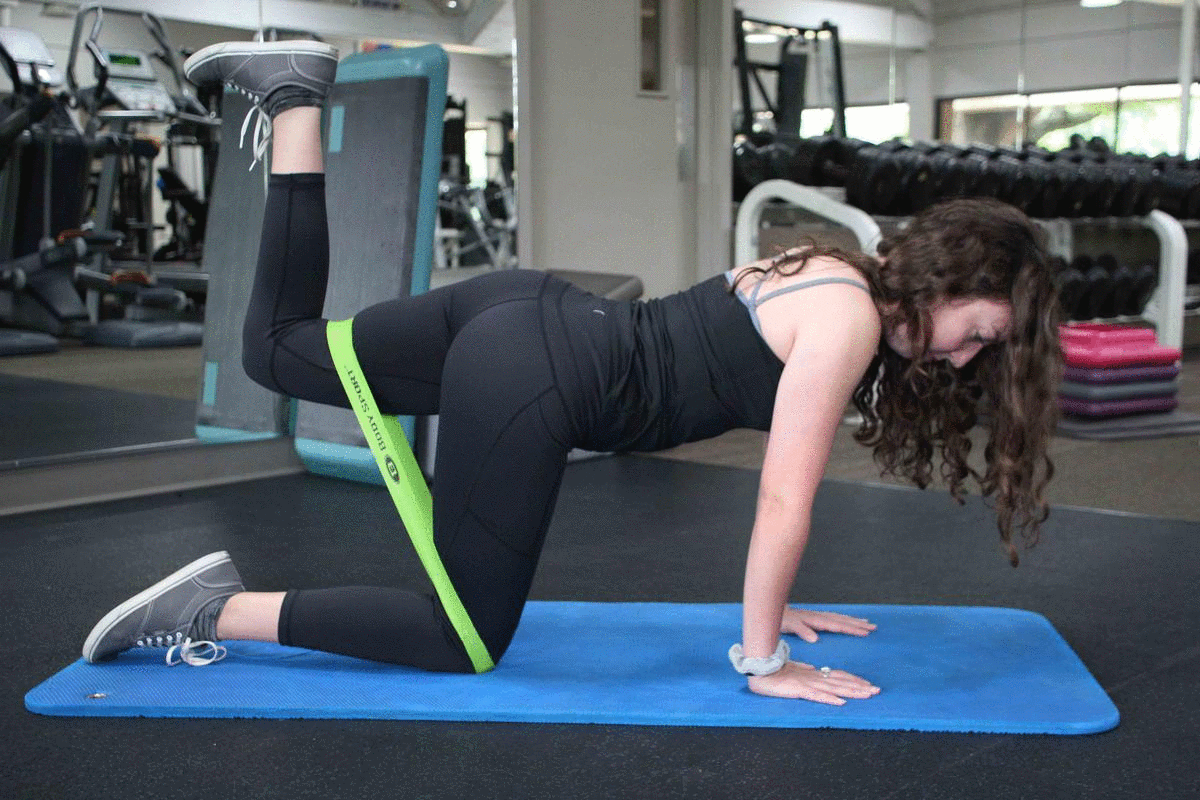
Destanee Hall, an ACE-certified trainer and group fitness instructor, demonstrates the Quadruped With Miniband Hip Extension at Little Rock Racquet Club. (Arkansas Democrat-Gazette/CELIA STOREY)
As a former competitive volleyball player, I've had my fair share of injuries, ranging from patellar tendinitis to medial epicondylitis. Fortunately for me, most of my injuries were from overuse rather than an acute incident. This made my rehabilitation and preventive training program very predictable and consistent.
At a young age, I learned that failing to prepare one's body for competition can result in breakdown, pain and injury. In my early 20s, I traveled all around the Midwest competing in sand and indoor volleyball events. Although my body held up for a while, eventually all of the jumping and arm swings created muscular imbalances and tightness that resulted in some nasty sideliners.
After I'd worked through rehabilitation and spoken with chiropractors, physical therapists and other health professionals, it was clear that my next step was preventing injury through proper training.
I began a program of strength training for my legs, hips, core, rotator cuffs and other key muscle groups. These exercises were in addition to my "normal" strength training that I'd begun years earlier.
In only a few short months, I began to realize the benefit of matching my preventive training to the activities and movements for my sport. I began to perform better, recover faster, and I experienced far fewer overuse injuries than I had in the past.
It's a lesson I've never forgotten, and one that I feel is important to share with you.
The key to adding the right preventive training to your program is to understand what your primary movement patterns are. When I was playing volleyball, my movement patterns included lots of jumping off two feet, lateral lunging and right arm swings. Once I realized how to improve my strength in the muscles that supported those movements, creating the preventive workout program was simple.
After the primary movement patterns are identified, the next step is to select preventive exercises that address the key muscles in a gentle — but concentrated — fashion. For example, electricians might spend most of the day on their feet while working with the small muscles in their hands and wrists. This is a specific movement pattern that can be addressed with exercises that strengthen those areas.
This week's exercise is great for those with office jobs, as the seated position is (believe it or not) considered a movement (or lack thereof) pattern. It's all too common these days, and the Quadruped With Miniband Hip Extension really challenges those inactive gluteal muscles for office workers. The result can be a lower back less prone to pain.
1. Select a light/medium miniband and wrap it just above both knees.
2. Get on your hands and knees on the floor (chest facing the floor).
3. Slide the miniband down on the right leg so that it's pinched between the right knee and the floor.
4. Keeping the left knee at 90 degrees, drive the right heel up toward the ceiling. The stretch band should get very tight, creating a strong contraction in the left gluteal.
5. Perform 12 repetitions, then switch sides and repeat.
The key to performing this exercise correctly is maintaining a slow and steady cadence that will allow the gluteal muscle to contract fully without altering the lower back position. The tendency is to increase lower back curvature, so be aware of that and maintain a neutral spine throughout. Enjoy!
Matt Parrott has a doctorate in education (sport studies) and a master's in kinesiology and is certified by the American College of Sports Medicine.
Style on 07/08/2019
